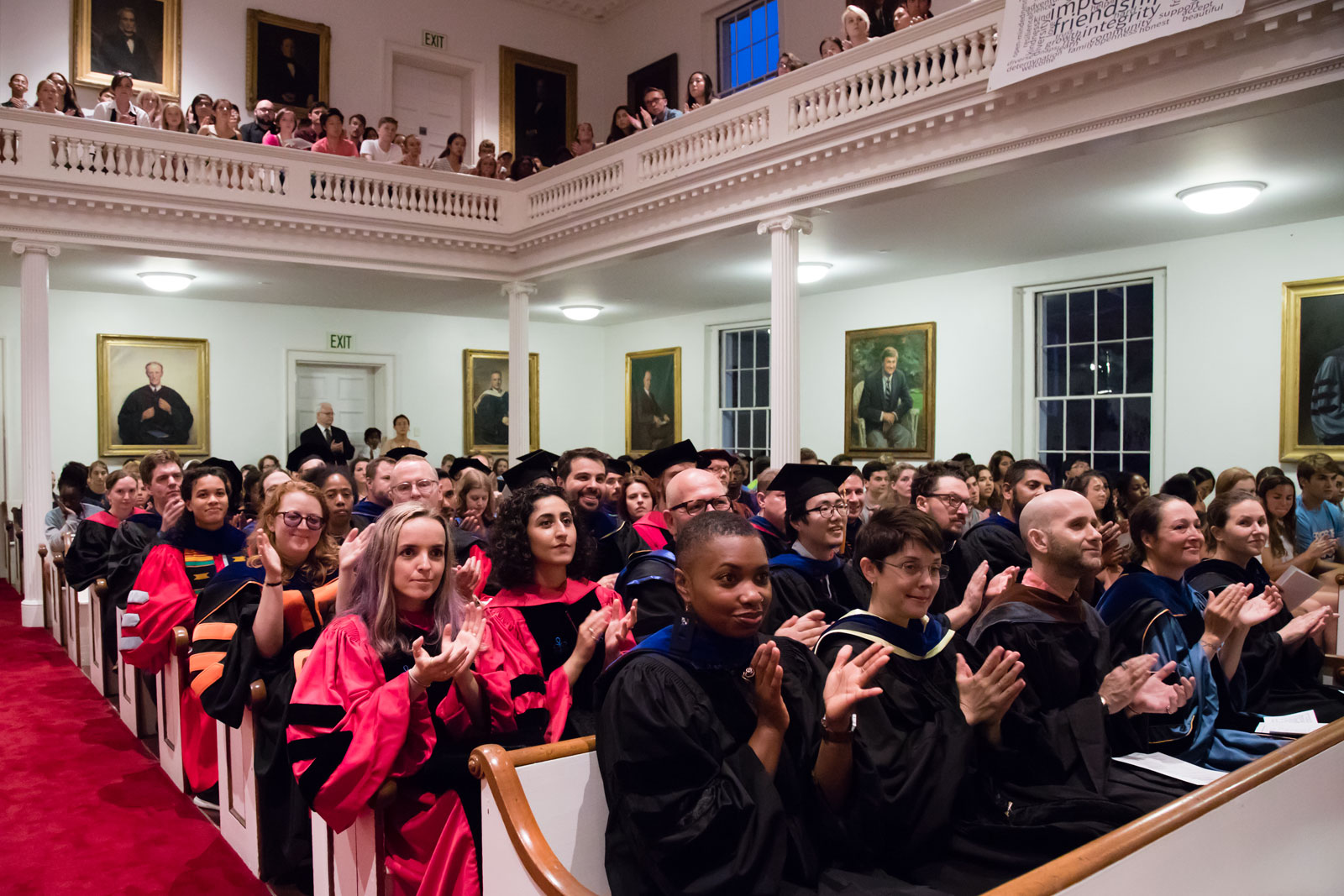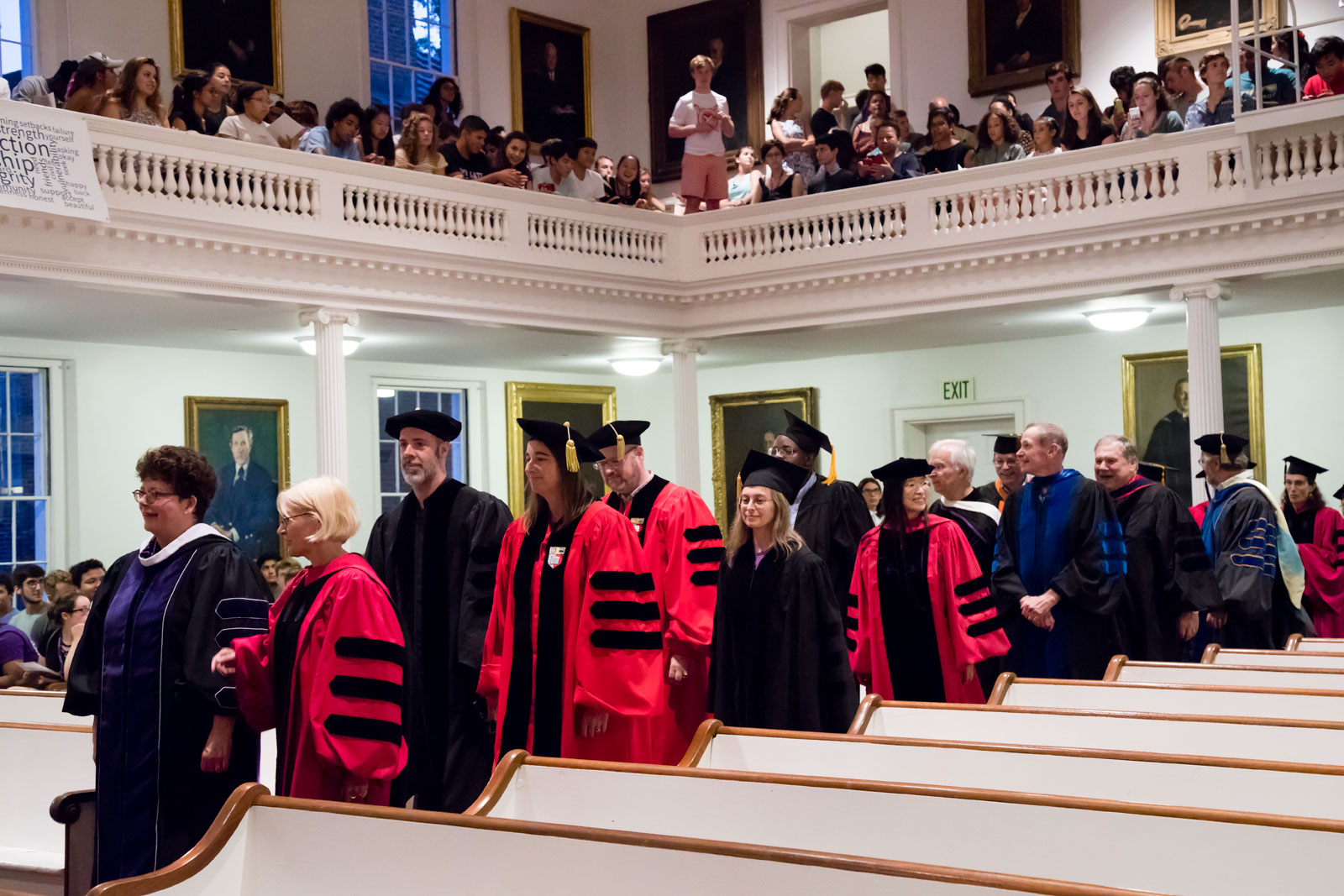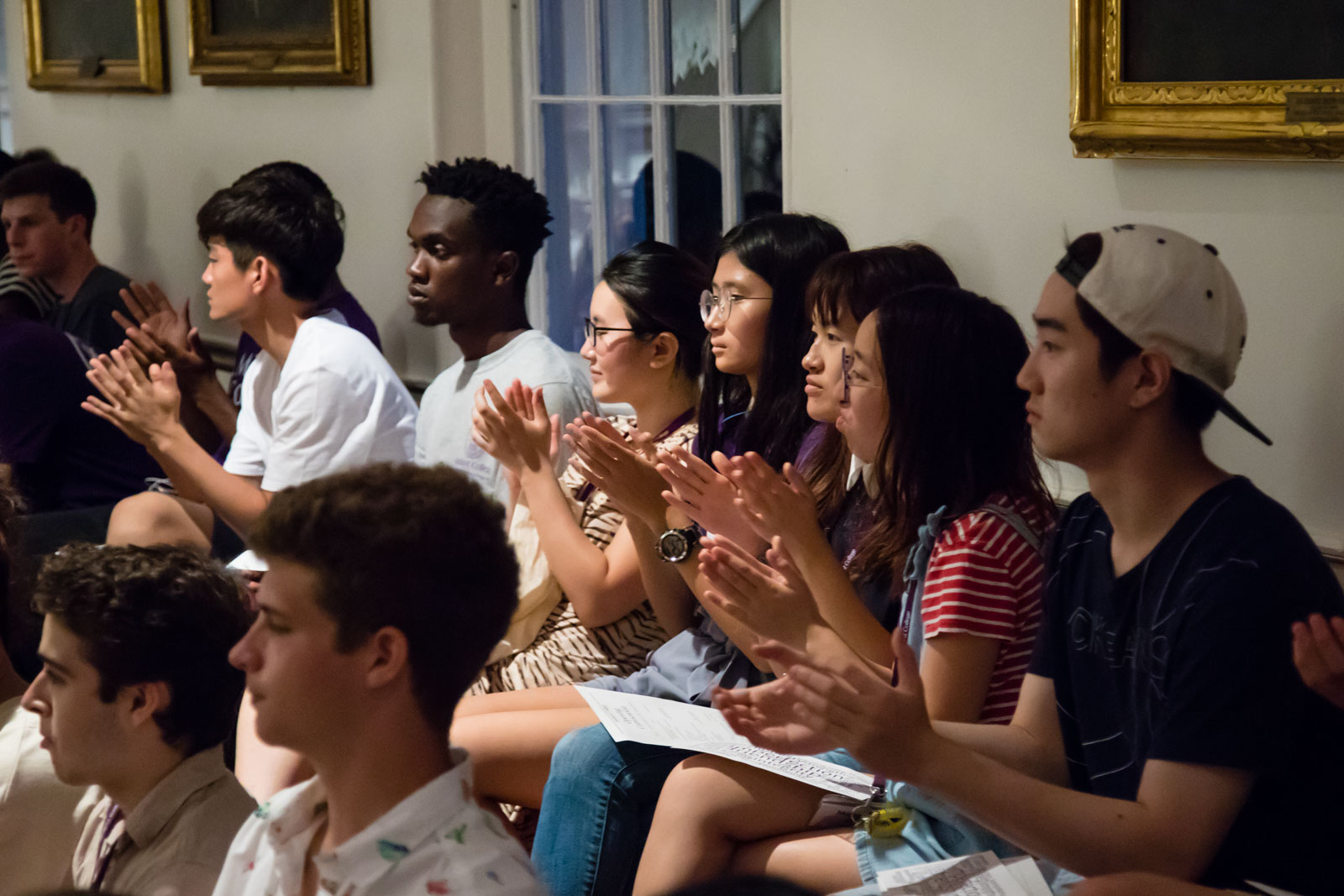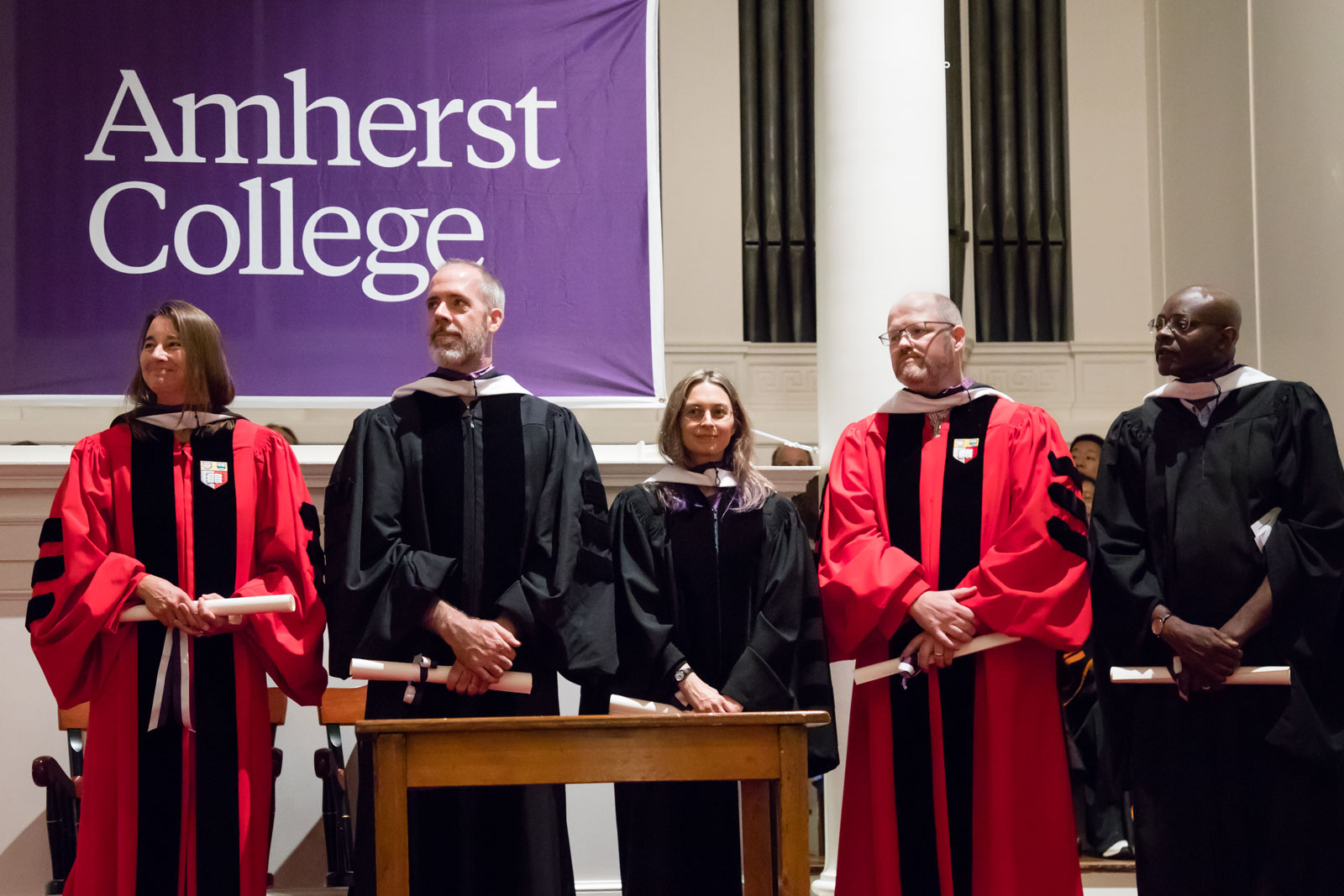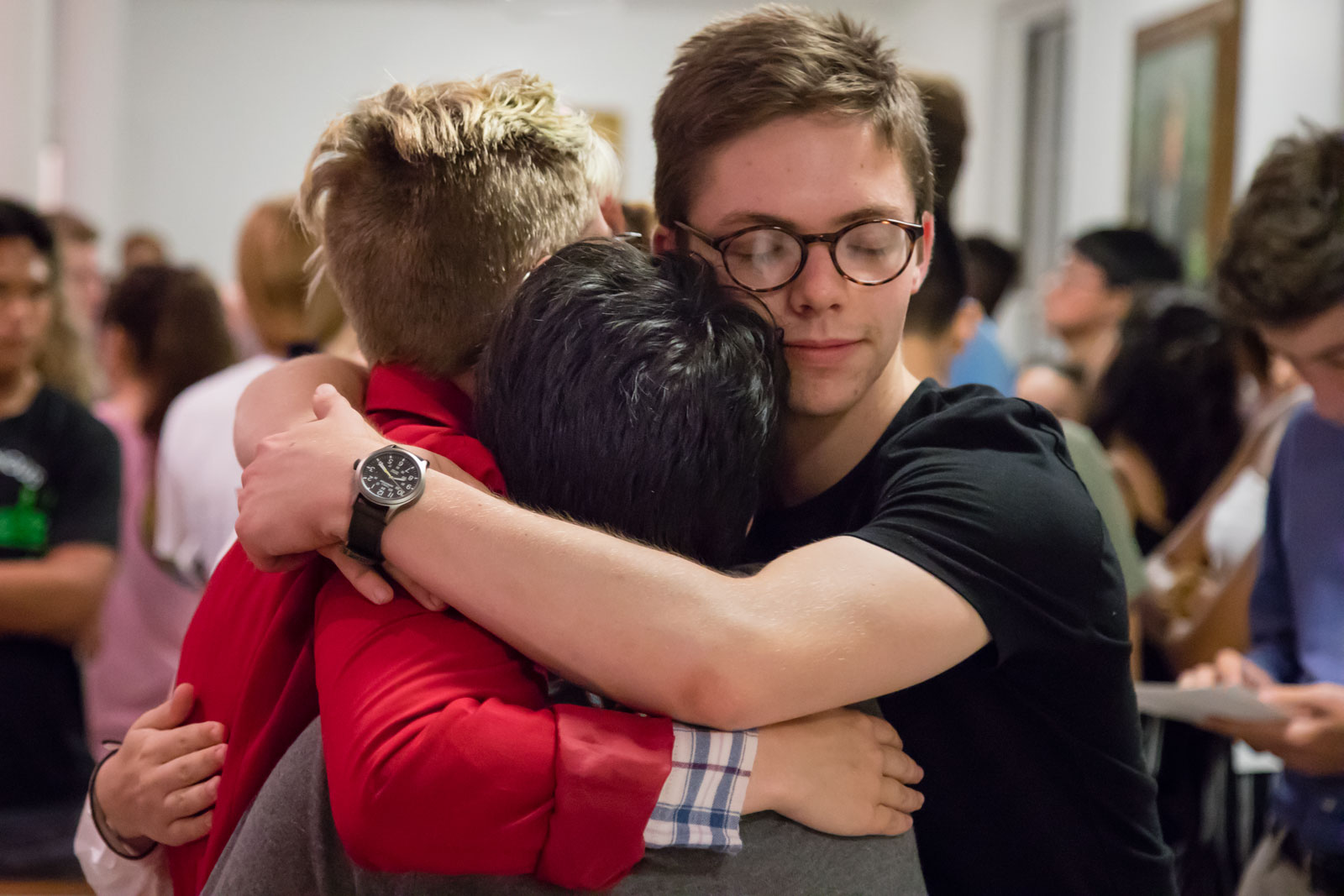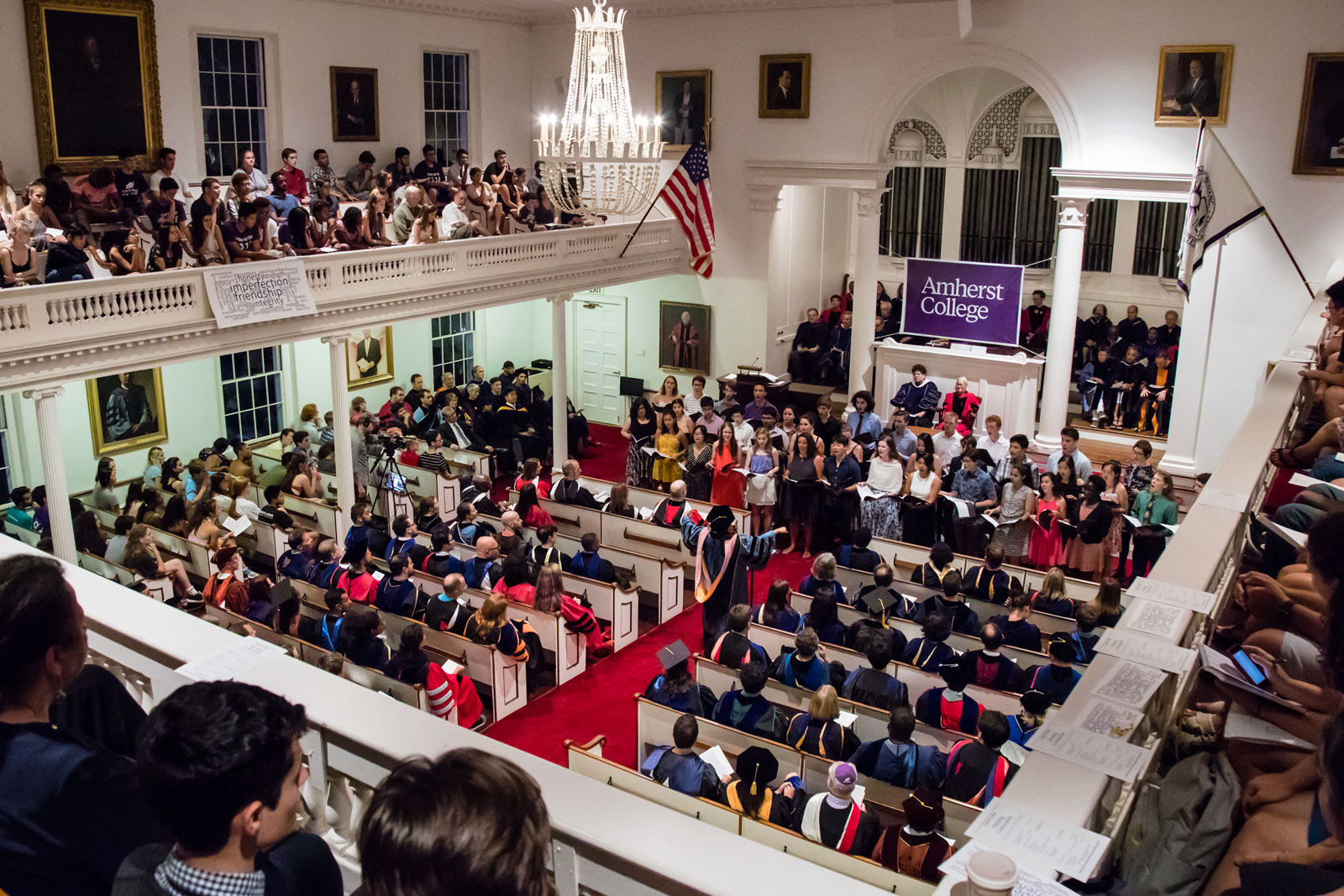There’s a sense of history that surrounds the incoming class each year when they take their seats in Amherst’s historic Johnson Chapel for the first time.
President Biddy Martin made use of the history in the room on Monday evening when she spoke about the egalitarian origins of the Chapel, its significance to the College, and the presidents and trailblazers represented in oil paintings on its walls.
But first, as she was welcoming the new Amherst class of 2022, Martin realized she had forgotten to indicate that the students and faculty in the room could be seated. With a laugh and a reminder that she had asked everyone to “make friends with imperfection,” during her welcoming remarks at Orientation the week before, she invited them to settle into the pews. She also pointed out that their seats might not be comfortable, as they had been installed in 1827.
“Johnson Chapel is the heart of Amherst,” Martin told the audience. “My sense, in deciding to talk about this tonight, is that you are in the process of finding your own ways to inherit the history of Amherst. I’m not sure anyone has talked to you about the Chapel or told you about the people who are portrayed here.”
When Martin first arrived at Amherst in 2011, she said, she found the Chapel forbidding. But she came to love the space, in part because of what she learned of its history and in part because the opportunity arose to move around some of the existing portraits and install new ones, including that of one of Amherst’s most important trailblazers, Rose Olver.
Olver, the first woman to hold a tenure-track position on the faculty, arrived at Amherst in 1962, when the student body was all-male. Olver went on to serve as the longtime faculty marshal. In her correspondence with Olver, Martin said she presented the idea of a portrait in Johnson Chapel as a symbolic way to show the faculty’s “visible place at the core of the College.” Such an argument got the publicity-shy Olver to agree to the 2013 installation, Martin said.
“Do you all know who Charles Hamilton Houston is?” Martin asked the audience, pointing to another painting on the front wall. Charles Hamilton Houston, class of 1915, was the architect of the legal strategy of the U.S. Supreme Court decision Brown v. Board of Education, which led to the desegregation of public schools.
Martin then pointed to portraits of the great American poet Richard Wilbur ’42; Niijima Jo (Joseph Hardy Neesima), class of 1870, the first Japanese citizen to receive a bachelor’s degree; U.S. President Calvin Coolidge, class of 1895; and William Hastie ’25, the nation’s first black federal judge—all represented on the Chapel walls.
Amherst College was founded not by a major benefactor’s donation, Martin continued, but by a group of ordinary townspeople, local citizens, who created a “charity fund,” later an endowment for “the education of indigent young men of piety and talents.” These townspeople “were so determined and so passionate to have a college in the town of Amherst,” Martin said, “that they persevered through enormous fights to get one,” even overcoming opposition by Williams College and Harvard University. Noah Webster (of dictionary fame) spoke eloquently in favor of the college and the town of Amherst as its ideal location and his influence helped secure the charter which was granted in 1825, four years after the College’s founding.
Every single one of the early Amherst presidents “faced financial difficulty, and every single one of them spent a significant amount of time raising money and working to persuade those with means that education is worth supporting,” Martin said. Students in the class of 2022, she continued, are beginning college at a moment when the “value and necessity” of higher education “has never been clearer.”
The fourth building created for the fledgling institution (after South Hall, the president’s house and North Hall) was Johnson Chapel, named after a local farmer who left money for the building in his will.
“This is no longer a religious college, but the space and the project of the College are sacred,” Martin said. “We have to fight for this form of education, a liberal arts education, which is a form that has never been better suited to the world in which we live. Make good use of it. It’s a gift.”
In addition to the president’s address, the annual Convocation ceremony included the conferring of honorary master’s degrees on recently promoted full professors. Martin and Dean of the Faculty Catherine Epstein conferred degrees on Lisa Brooks (from the departments of English and American studies), Christopher Dole (anthropology and sociology), Tanya Leise (mathematics and statistics), Trent Maxey (Asian languages and civilizations, history) and Olufemi Vaughan (black studies). Vanessa Fong ’96 (anthropology and sociology) has a bachelor’s degree from Amherst, and so did not receive an honorary degree, but was recognized with applause for her promotion to full professor. Timothy J. Van Compernolle (film and media studies, Asian languages and civilizations) was recognized in absentia. After performances by the Choral Society, Martin also welcomed Arianne Abela, the new director of the choral music program and lecturer in music.
